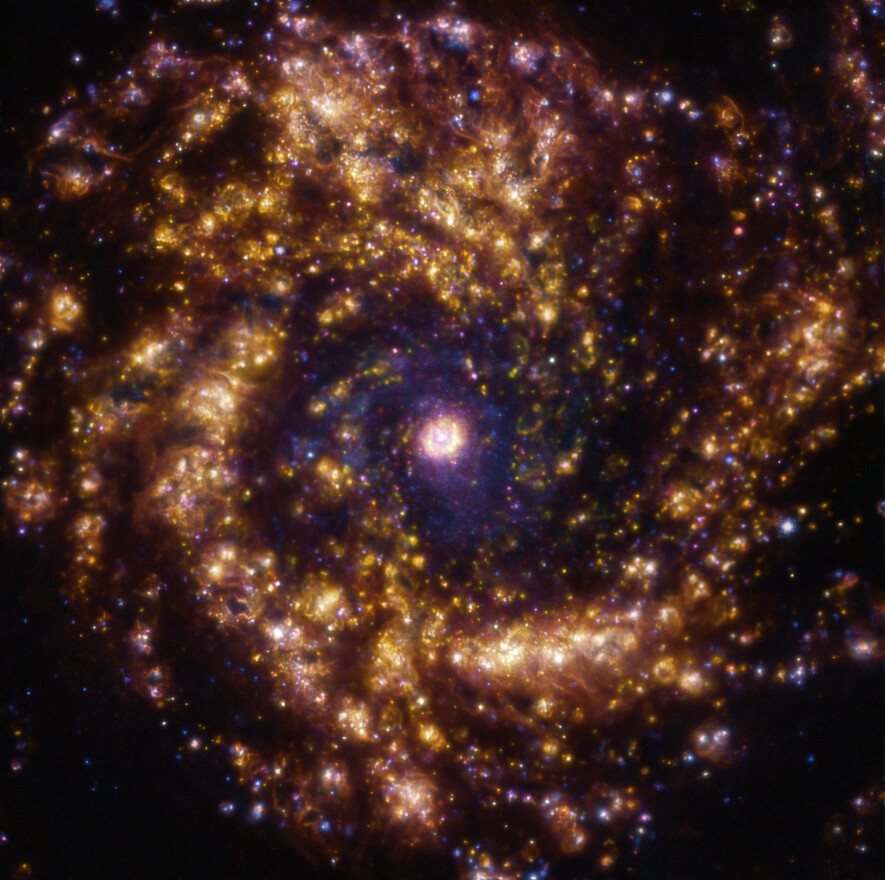The presented image, obtained using the MUSE spectrograph installed on the VLT complex, demonstrates the galaxy M 61, which is also known under the designation NGC 4303. It is located at a distance of 60 million light-years from Earth and is one of the largest members of the Virgo cluster.

Like our Milky Way, M 61 is a spiral galaxy with a bar. But there is also one significant difference between them. M 61 is one of the so-called galaxies with flashes of star formation — an unusually large number of stars are born in it. Therefore, astronomers use it as a natural laboratory to study this phenomenon.
Stars are formed by the compression of clouds of cold gas. The high-energy radiation of newborn luminaries heats and ionizes the gas residue surrounding them. It glows — and this glow serves as a kind of lighthouse, indicating that a new star has been born. That’s what you can see in the picture. The glowing gas forms a shining whirlpool of golden hue, which is direct evidence of stars being born in the spiral branches of M 61.
The golden glow in the photo is the result of superimposing images obtained at different wavelengths of light by the MUSE spectrograph. Clouds of ionized oxygen, hydrogen, and sulfur are shown in blue, green, and red, respectively. The observations of M 61 were carried out within the framework of the PHANGS project, the purpose of which is to observe close galaxies at all wavelengths of the electromagnetic spectrum with high angular resolution.
You can also admire the impressive photo of the spiral galaxy transmitted by the James Webb Telescope.
According to https://www.eso.org
Follow us on Twitter to get the most interesting space news in time
https://twitter.com/ust_magazine
